 W
WWillem Arondeus was a Dutch artist and author who joined the Dutch anti-Nazi resistance movement during World War II. He participated in the bombing of the Amsterdam public records office to hinder the Nazi German effort to identify Dutch Jews and others wanted by the Gestapo. Arondeus was caught and executed soon after his arrest. Yad Vashem recognized Arondeus as Righteous Among the Nations.
 W
WOsmund Lindgaard Brønnum was a Norwegian sports official and communist resistance member.
 W
WDirk Brouwer was a Dutch architect. His father was a concierge at a local technical school.
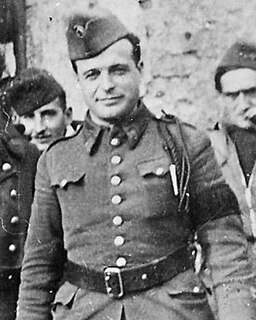 W
WJean Cavaillès was a French philosopher and logician who specialized in philosophy of mathematics and philosophy of science. He took part in the French Resistance within the Libération movement and was arrested by the Gestapo on 17 February 1944 and shot on 4 April 1944.
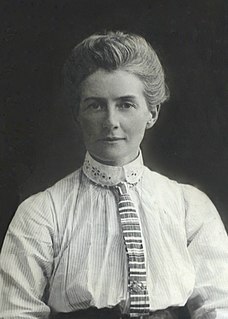 W
WEdith Louisa Cavell was a British nurse. She is celebrated for saving the lives of soldiers from both sides without discrimination and for helping some 200 Allied soldiers escape from German-occupied Belgium during the First World War, for which she was arrested. She was accused of treason, found guilty by a court-martial and sentenced to death. Despite international pressure for mercy, she was shot by a German firing squad. Her execution received worldwide condemnation and extensive press coverage.
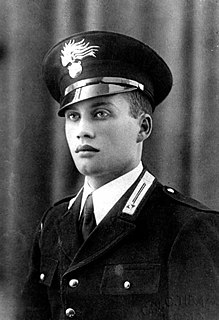 W
WSalvo D'Acquisto was a member of the Italian Carabinieri during the Second World War.
 W
WBjarne Dalland was a Norwegian trade unionist, politician and communist resistance member.
 W
WJacques Decour, real name Daniel Decourdemanche, was a French writer and resistant, killed by the Nazis.
 W
WBoy Ecury was a member of the Dutch Resistance in World War II.
 W
WAlois Eliáš was a Czechoslovak general and politician. He served as prime minister of the puppet government of the German-occupied Protectorate of Bohemia and Moravia from 27 April 1939 to 27 September 1941 but maintained contact with the government-in-exile. Because of his participation in the anti-Nazi resistance, he was the only head of government who was murdered by the Nazis during World War II.
 W
WHenri Claude Fertet was a French schoolboy and resistance fighter who was executed by the German occupying forces during World War II. He was posthumously awarded several national honours. He is known for the letter he wrote to his parents on the morning of his execution, and he has become one of those who symbolise the French Resistance.
 W
WCharles Algernon Fryatt was a British mariner who was executed by the Germans for attempting to ram a U-boat in 1915. When his ship, the SS Brussels, was captured off the Netherlands in 1916, he was court-martialled and sentenced to death because he had attacked the submarine as a non-combatant. International outrage followed his execution near Bruges, Belgium. In 1919, his body was reburied with full honours in the United Kingdom.
 W
WRachel Grepp, Norwegian: Rachel Catharina Helland Grepp, née Helland was a Norwegian journalist and politician for the Norwegian Labour Party.
 W
WWerner Karl Otto Theodor von Haeften was an Oberleutnant in the Wehrmacht who took part in the military-based conspiracy against Adolf Hitler known as the 20 July plot.
 W
WCaptain Graham Hayes was a British commando in the Small Scale Raiding Force in World War II.
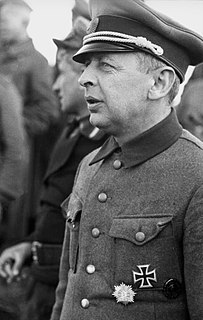 W
WBronislav Vladislavovich Stroganof Kaminski was a Russian anti-communist collaborationist and the commander of the Kaminski Brigade, an anti-partisan and rear-security formation made up of people from the so-called Lokot Autonomy territory in the Nazi Germany occupied areas of Russia, which was later incorporated into the Waffen-SS as the SS Sturmbrigade RONA ]. Older publications mistakenly give his first name as Mieczyslaw. Under Kamniski's command, the unit committed numerous war crimes and atrocities in the German-occupied Soviet Union and Poland.
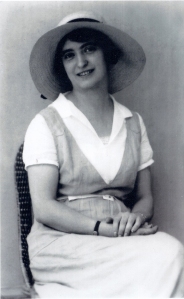 W
WEleni "Lela" Karagianni also written Karayanni was a Greek resistance leader during World War II. The wife of an Attican pharmacist and the mother of seven children, Karagianni worked to coordinate Greek resistance cells and their activities against the occupying Axis forces. Captured and tortured by the Germans in 1944, Karagianni was sent to Haidari concentration camp, where she continued to organize a resistance against the Germans. She was executed by firing squad on 8 September 1944.
 W
WAlbin Köbis was a German sailor executed in 1917 for incitement to rebellion in the Imperial German Navy.
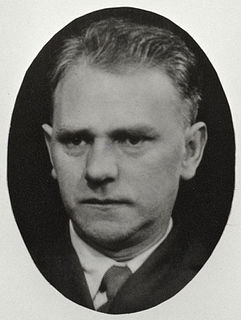 W
WHarald H. Langhelle was a Norwegian newspaper editor and politician for the Labour Party.
 W
WEugen Leviné was a German communist revolutionary and one of the leaders of the short-lived Bavarian Council Republic.
 W
WOttar Lie was a Norwegian communist and resistance member.
 W
WJohan Limpers was a Dutch sculptor.
 W
WJosef Mašín was an army officer of Czechoslovakia and member of the underground resistance against the Nazis. He was the father of Josef and Ctirad Mašín.
 W
WAlbrecht Mertz von Quirnheim was a German Army colonel and a resistance fighter in Nazi Germany involved in the 20 July plot against Adolf Hitler.
 W
WFriedrich Olbricht was a German general during World War II and one of the plotters involved in the 20 July Plot, an attempt to assassinate Adolf Hitler in 1944. He was a senior staff officer, with the rank of lieutenant general. He was secretly in contact with most of the leaders of the Resistance. They briefed him on their various plots and he placed sympathetic officers in key positions. He quietly encouraged field commanders to support the resistance. By late 1943 his office was the centre of Resistance plotting, under Claus von Stauffenberg.
 W
WGabrielle Alina Eugenia Maria Petit was a Belgian woman who spied for the British Secret Service during World War I. She was executed in 1916, and became a Belgian national heroine after the war's end.
 W
WTadeusz Popek was a Polish partisan and underground activist during World War II. During the German occupation of Podhale, Popek became the co-founder of the Polish resistance organization called the Tatra Confederation, a.k.a. Confederation of the Tatra Mountains, operating in the Nowy Targ area. He was in charge of clandestine publications including Der Freie Deutsche meant for the Wehrmacht. Popek died in Zakopane, executed by a firing squad in the courtyard of the infamous Palace Hotel.
 W
WMax Reichpietsch was a German sailor executed in 1917 for socialist agitation in the Imperial German Navy.
 W
WMartin-Paul Samba, born Mebenga m'Ebono, was a Bulu military officer during the Imperial German colonial period of Cameroon. M'Ebono became a favourite of the German colonials during his upbringing in Kribi, a coastal settlement in southern Cameroon. He was sent to Germany in 1891 to enter the German Military Academy; he was baptised Martin-Paul Samba while abroad. Upon graduation, Samba returned to Cameroon and accompanied German military expeditions across the colony.
 W
WJannetje Johanna (Jo) Schaft was a Dutch resistance fighter during World War II. She became known as 'the girl with the red hair'. Her secret name in the resistance movement was "Hannie".
 W
WOtto Schimek was an Austrian soldier in the German Wehrmacht during World War II who served as a member of a firing squad. He was himself executed, allegedly for refusing to carry out a death sentence on Poles, making him a symbol of pacifism and Austrian resistance to Nazism. The truthfulness of the story has been disputed, with critics arguing that the story is not based on any reliable documents and is a fabrication.
 W
WHarald Andreas Gerotti Slåttelid was a Norwegian trade unionist, newspaper editor and communist resistance member.
 W
WHendricus Josephus Franciscus Marie (Henk) Sneevliet, known as Henk Sneevliet or by the pseudonym "Maring", was a Dutch Communist, who was active in both the Netherlands and the Dutch East Indies. As a functionary of the Communist International, Sneevliet guided the formation of the Communist Party of China in 1921. In his native country, he was the founder, chairman and only Representative for the Revolutionary Socialist (Workers') Party, RSP/RSAP. He took part in the Communist resistance against the Nazi occupation of the Netherlands during World War II, for which he was executed by the Germans in April 1942.
 W
WHellmut Ludwig Späth was a German botanist and plant nursery owner, murdered by the Nazi party. His nursery is now Späth-Arboretum.
 W
WHans Emil Otto Graf von Sponeck was a German general during World War II who was imprisoned for disobeying orders and later executed.
 W
WClaus Philipp Maria Justinian Schenk Graf von Stauffenberg was a German army officer best known for his failed attempt on 20 July 1944 to assassinate Adolf Hitler at the Wolf's Lair and remove the Nazi Party from power. Along with Henning von Tresckow and Hans Oster, he was one of the central figures of the German resistance to Nazism within the Wehrmacht. For his involvement in the movement, he was executed by firing squad shortly after Operation Valkyrie.
 W
WGregor Strasser was an early prominent German Nazi official and politician who was murdered during the Night of the Long Knives in 1934. Born in 1892 in Bavaria, Strasser served in World War I in an artillery regiment, rising to the rank of first lieutenant. He joined the Nazi Party (NSDAP) in 1920 and quickly became an influential and important figure. In 1923, he took part in the abortive Beer Hall Putsch in Munich and was imprisoned, but released early for political reasons. Strasser joined a revived NSDAP in 1925 and once again established himself as a powerful and dominant member, hugely increasing the party's membership and reputation in northern Germany. Personal and political conflicts with Adolf Hitler led to his death in 1934 during the Night of the Long Knives.
 W
WViolette Reine Elizabeth Szabo was a British-French Special Operations Executive (SOE) agent during the Second World War and a posthumous recipient of the George Cross. On her second mission into occupied France, Szabo was captured by the German army, interrogated, tortured and deported to Ravensbrück concentration camp in Germany, where she was executed.
 W
WPiotr Szarek was a Polish Catholic clergyman, member of the Congregation of the Mission, publicly murdered by the Nazis on the ninth day of the Second World War.
 W
WKarl Freiherr von Thüngen was a German general in the Wehrmacht during World War II who was executed in 1944 after the failed 20 July Plot.
 W
WLéon Trulin was a Belgian spy executed by the German military authorities because of his spying activities during First World War.
 W
WVladislav Vančura was an important Bohemian (Czech) writer active in the 20th century, who was killed by the Nazis. He was also active as a film director, playwright and screenwriter.
 W
WLéonce Vieljeux was a colonel in the French reserve army, industrialist and mayor of La Rochelle.
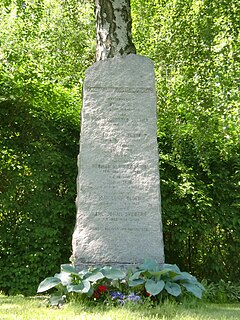 W
WJon Asbjørn Vislie was a Norwegian lawyer who was executed during the occupation of Norway by Nazi Germany.
 W
WStanisław Wiórek or alternatively Stanisław Wiorek was a Polish theologian and Catholic clergyman, member of the Congregation of the Mission, publicly murdered by the Nazis on the ninth day of the Second World War.